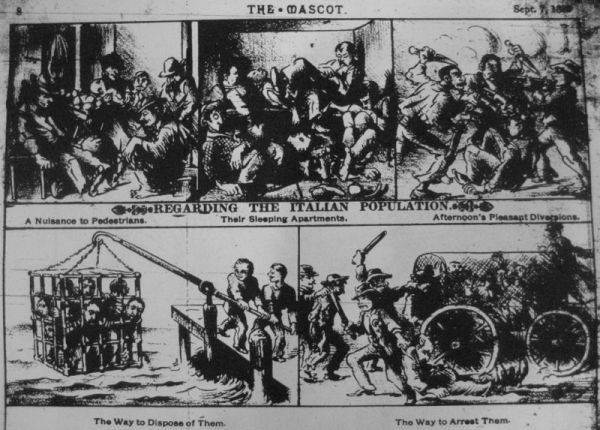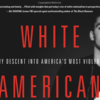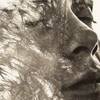Whites on a Leash: Italian Americans and White Privilege in the U.S.
For Italian Americans, “making it” has come with a high price tag. It has cost us the language of our ancestors--the main means by which history is preserved and heritage passed on from one generation to the next. For a few generations we have had to trade-in or hide any customs which have been depicted as quaint, but labeled as alien, in order to prove equality to those above us on the ladder of success. In this way, Italian Americans have become white, but a different kind of white than those of the dominant Anglo/Saxon culture. Italian Americans have become whites on a leash. And as long as we behave ourselves (act white), as long as we accept the images of ourselves as presented in the media (don't cry defamation) and as long as we stay within corporate and socio-cultural boundaries (don't identify with other minorities) we will be allowed to remain white. This behavior has led to Italian Americans being left out of most discussions of multiculturalism.
In A Different Mirror, Ronald Takaki's revision of American history the European immigrants and their descendants are either lumped in the falsely monolithic category of whites or overlooked entirely. The fact is that each of these groups has its own unique history of subjugation that aligns it more closely with Takaki's oppressed minorities than with the Anglo majority. We all need to come to grips with the fact that there is a great diversity and much oppression within white America. Until then, we are doomed to repeat the mistakes of the earlier histories that we are trying to correct.
For too long, the U.S. media were all too ready to help restrict Italians’ attempts to assimilate as white Americans. The vast majority of Italian Americans are law-abiding citizens, but you wouldn't know it by watching television, listening to the radio or reading books. We have been viciously framed by the constant repetition of negative portrayals. Most histories of mafia in America begin with the 1890 murder of the corrupt New Orleans Police Chief Hennessey. The aftermath of his murder lead to one of the largest recorded mass lynchings in this country's history. America's obsession with the mafia has overshadowed the real history of Italians in America that includes indentured servitude, mass lynchings, Klu Klux Klan terrorism against Italians, and strong participation in civil rights struggles. For Italian Americans, overt oppression has given way to more covert techniques of discrimination. Italians have replaced Indians and blacks as the accepted “bad guys” in films, and this image was regularly reinforced and perpetuated through contemporary remakes of The Untouchables and the establishment of museums such as the now gone “Capone's Chicago.”
These portrayals have become the building blocks of an American cultural imagination that has petrified a stereotype and fortified the possibilities of remaining white. This never ending reproduction of negative stereotypes has so impoverished American minds that anything Italian is immediately connected to gangsterism and ignorance, and so Italians may protest such images without a sense of what other groups have experienced. To become American, Italians would have to do everything in their power to show how they were unlike the gangsters and buffoons who dominated public representation of their culture. To stay Americans, we would have to avoid anything that might make us seem needy for institutional protection such as that granted to other minority groups.
There are many examples of Italian Americans who have both broken the silence and created the historical narratives that will challenge long established notions of ethnic whiteness, but I will bring up one presented by the late Rudolf Vecoli. In his keynote address to the 1994 American Italian Historical Association’s national conference, Vecoli challenged the notion of Italian Americans being white. Using numerous examples from history in which Italian Americans were not always considered white, he argued that:
Our experience has taught the fallacy of the very idea of race and the mischief of racial labels. It has taught us that both total assimilation and total separatism are will-o’-the-wisps, unachievable--and undesirable if they were. It has taught us that a healthy ethnicity is compatible with, indeed essential to, a healthy America. For these reasons, we, Italian Americans, have something important to contribute to the national dialogue.(1)
Vecoli concludes his speech with the idea that the key to Italian American participation is the creation of the ability to define our selves, “distinguished by our unique experience” that is not “white, nor black, nor brown, nor red, nor yellow.”
Although racial discrimination against Italians was more prevalent in the past, it has not disappeared. Today, Italian American youth suffer from association with a different stereotype; the image of the organ-grinding immigrant has been replaced by the mafioso and the dumb street kid ala Rocky Balboa. These images do not come from family interaction, but from the larger society. So that when Italian Americans look into the cultural mirror, they receive a distorted view, as though it was one of those funny mirrors found in an amusement park. Consciously or unconsciously those distorted images affect their identity, and they must face the reality that the dominant culture is comfortable with Italians as serio/comic figures, caricatures made up of the most distorted aspects of their culture. The question all Italian Americans must confront these days is, “Who controls the image making process and why are their social images so distorted?" Reinforcement of a positive cultural identity that was created in the home is necessary for the maintenance of and a willingness to continue that identification outside the home. If children get the idea that to be Italian is to be what the media and white histories say Italian is, then they will either avoid it, if it shames them, or embrace it if it gets them attention.
If not totally black, Italians have certainly complicated the notion of whiteness in America so that they are neither totally white, and it is this in-between status, that makes them likely candidates to support the abolition of whiteness as a privilege status in the U.S.A. For those who can naively say we’re not black, there are others who counter with the truth, that we weren’t always white.
* * *
(1) Vecoli, Rudolph J., “‘Are Italian Americans Just White Folks?’” in Through the Looking Glass: Italian and Italian/American Images in the Media. Selected Essays from the 27th Annual Conference of the American Italian Historical Association, Mary Jo Bona and Anthony Julian Tamburri, eds. Staten Island, NY: American Italian Historical Association, 1996, p. 17.








































Comments
Whites on a Leash: Italian Americans and White Privilege in the
Brilliant!
The goal, I believe, is not